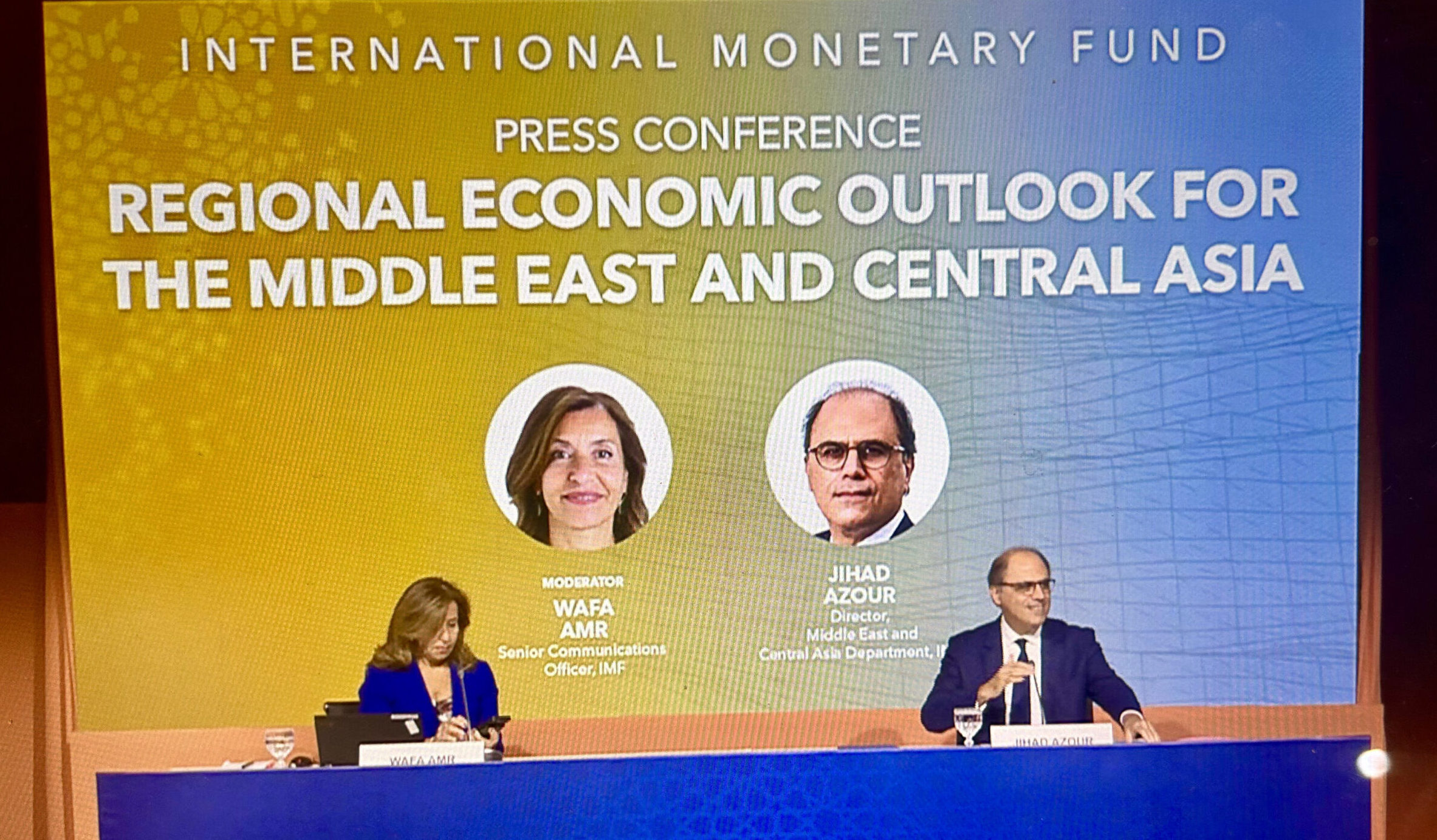MARRAKECH — Kazakhstan’s growth is poised to make a strong comeback this year, thanks to robust domestic demand and increased oil production, driven by the alleviation of operational constraints affecting the Caspian Pipeline Consortium and the Tengiz oil field expansion. This optimistic outlook comes from the recently unveiled International Monetary Fund (IMF) Regional Economic Outlook (REO) during the IMF and World Bank Annual Meetings in Morocco on Oct. 12.

Jihad Azour, Director, IMF Middle East and Central Asia Department delivering key messages on REO on Oct. 12 in Marrakech. Photo credit: The Astana Times.
GDP growth in Caucasus and Central Asia set to improve
The GDP growth in the Caucasus and Central Asia (CCA) region, encompassing countries such as Armenia, Azerbaijan, Georgia, Kazakhstan, the Kyrgyz Republic, Tajikistan, Turkmenistan, and Uzbekistan, is relatively robust – 4.6% in 2023. This marks a 0.3% upward revision compared to April’s forecast, owing to the region’s continued positive growth spurred by real and financial flows.
However, by 2024, growth is anticipated to dip to 4.2%, which remains well below its pre-pandemic historical average. This persistent challenge, as per IMF experts, is hampering further growth.
Inflation is also expected to remain on the radar, projected at 8.3% by 2024. However, this year will see elevated inflation in several countries. For instance, strong demand in the services sector and substantial wage growth have slowed the disinflation process in countries such as Azerbaijan, Kazakhstan, the Kyrgyz Republic and Uzbekistan.
A beacon of hope: trade, migration and tourism
Despite some moderation in a few economies, strong transit trade, inward migration, and tourism will continue to bolster growth in the region. Migrant flows, net money transfers, and nonresident deposits, though lower than the peak of 2022, remain above pre-war levels in most countries. This and continued transit trade have powered a significant export expansion. Industries such as retail sales and communication services, which are experiencing growth surpassing pre-pandemic levels, have created robust domestic demand in Armenia, Georgia and Kazakhstan.

The Astana Times News Editor Aida Haidar is in Marrakech, covering the IMF: World Bank Annual Meetings. Photo credit: IMF.
The IMF report highlights that external buffers have improved across most CCA countries due to high international oil and gas prices for oil-exporting nations, substantial trade surpluses in services, and continued private transfers from Russia. Strong remittance flows and reserve accumulation have persisted in 2023, leading to the appreciation of domestic currencies, particularly in Armenia and Georgia, thanks to the substantial inflows relative to the domestic economy’s size.
Navigating risks and growth prospects
While there is an array of growth prospects on the horizon, including a potential global decline in inflation and a more substantial influx of migrants and foreign exchange, the IMF outlook points out that there are also several downside risks to be aware of.
A more significant-than-anticipated slowdown in China or advanced economies could reduce external demand and dampen the region’s economic prospects. Given China’s role in global commodity demand, this could also affect tourism and exports.
Additionally, an escalation of the Ukraine conflict could trigger inflationary pressures, impacting food, fuel and fertilizer prices, with differential effects depending on countries’ import or export reliance. Climate-related shocks, such as persistent droughts and floods, could harm the region’s physical infrastructure, agricultural output and food prices.
A shift in trade patterns
The IMF outlook highlights a notable shift in trade patterns due to the Russia-Ukraine war. For example, the Kyrgyz Republic has tripled its share of exports to Russia, soaring from 14% of total exports in 2021 to 44% in 2022.
Uzbekistan’s increase in exports to Russia was smaller, growing by only five percentage points, from 12% in 2021 to 17% in 2022, while exports to the European Union and the rest of the world saw significant increases. Overall, most CCA countries have ramped up their exports to the rest of the world, enhancing their global trade footprint in the region.


